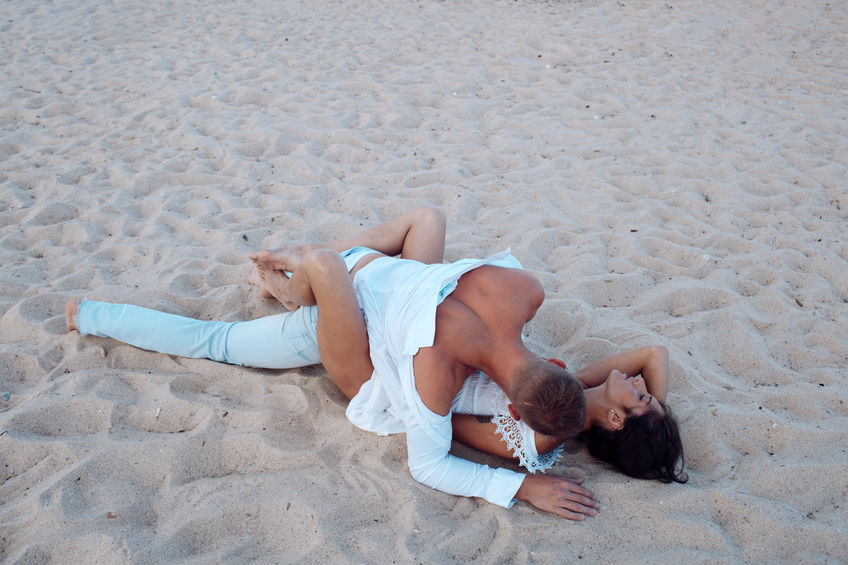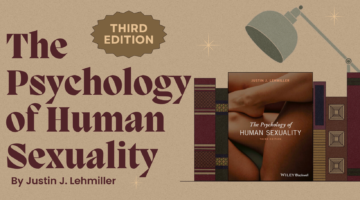People Have More Sex in the Summer. Here’s Why
June 24, 2019 by Justin Lehmiller
Sex is seasonal.
Our patterns of sexual activity ebb and flow throughout the year, and right now we’re entering peak territory because it’s officially summer. Research from a variety of sources suggests that early summer is one of the busiest times for, well, getting busy. Here’s some of the evidence:
- According to surveys, people say they’re having more sex in the summer. More teens report having their “sexual debut” (or very first sexual experience) at this time of year, too.
- Google searches for porn, prostitution, and online dating all rise in the summer. This isn’t because people are just spending more time online in the summer months, however. If that were the case, we’d see searches for everything follow a similar pattern, but we don’t—this trend is specific to sex-related content.
- Condom sales also rise during the summer and, somewhat paradoxically, rates of STDs rise at the same time, too (so maybe people aren’t using all of those condoms they’re buying, or perhaps they aren’t using them correctly?).
So what’s the deal? Why is there an increase in sexual behavior when the weather is nicer? There isn’t one simple or easy answer here. In all likelihood, we’re probably looking at a complex biopsychosocial phenomenon.
On the biological side, people may be in a better mood in the summer than they are in the winter due to greater sunlight exposure. Exposure to sunlight enhances production of serotonin, a neurotransmitter that plays a key role in regulating mood because it makes us feel good. It stands to reason that if people are generally feeling better in the summer, they’ll go out and do more things that increase opportunities for sex—you know, like going out drinking and dancing. Being in a good mood might also change the way you interact with other people—for example, maybe you’ll smile more—and this could potentially help spark more attractions.
On the psychological side, we know that people go out and do more fun and exciting things in the summer—activities that boost our level of physiological arousal, such as visiting amusement parks and playing outdoor sports. There’s a lot of research showing that when we do exciting things, we have a tendency to attribute the arousal we experience from those activities to the people we’re around. In other words, sometimes we mistake a racing heart for sexual attraction, such as when we’re exercising and we see an attractive person we’ve never seen before (learn more about the research supporting this idea here).
Lastly, on the social/environmental side, people tend to take more vacations and have more free time in the summer months. When people have a chance to get away from work or school for extended periods, the accompanying stress relief can help when it comes to getting in the mood for sex because your mind isn’t pulled elsewhere. At the same time, a lot of the environments we find ourselves in during the summer have more sexual cues, such as being on a crowded beach with people in revealing bathing suits. Perhaps those cues make us think more about sex.
In sum, there are things happening on multiple levels during the summer that are likely to create more opportunities for sex, and that’s probably why we see so many sexual indicators peaking at this time of the year.
Want to learn more about Sex and Psychology ? Click here for previous articles or follow the blog on Facebook (facebook.com/psychologyofsex), Twitter (@JustinLehmiller), or Reddit (reddit.com/r/psychologyofsex) to receive updates. You can also follow Dr. Lehmiller on YouTube and Instagram.
Image Source: 123RF/Gleb TV
You Might Also Like:

Dr. Justin Lehmiller
Founder & Owner of Sex and PsychologyDr. Justin Lehmiller is a social psychologist and Research Fellow at The Kinsey Institute. He runs the Sex and Psychology blog and podcast and is author of the popular book Tell Me What You Want. Dr. Lehmiller is an award-winning educator, and a prolific researcher who has published more than 50 academic works.
Read full bio >


